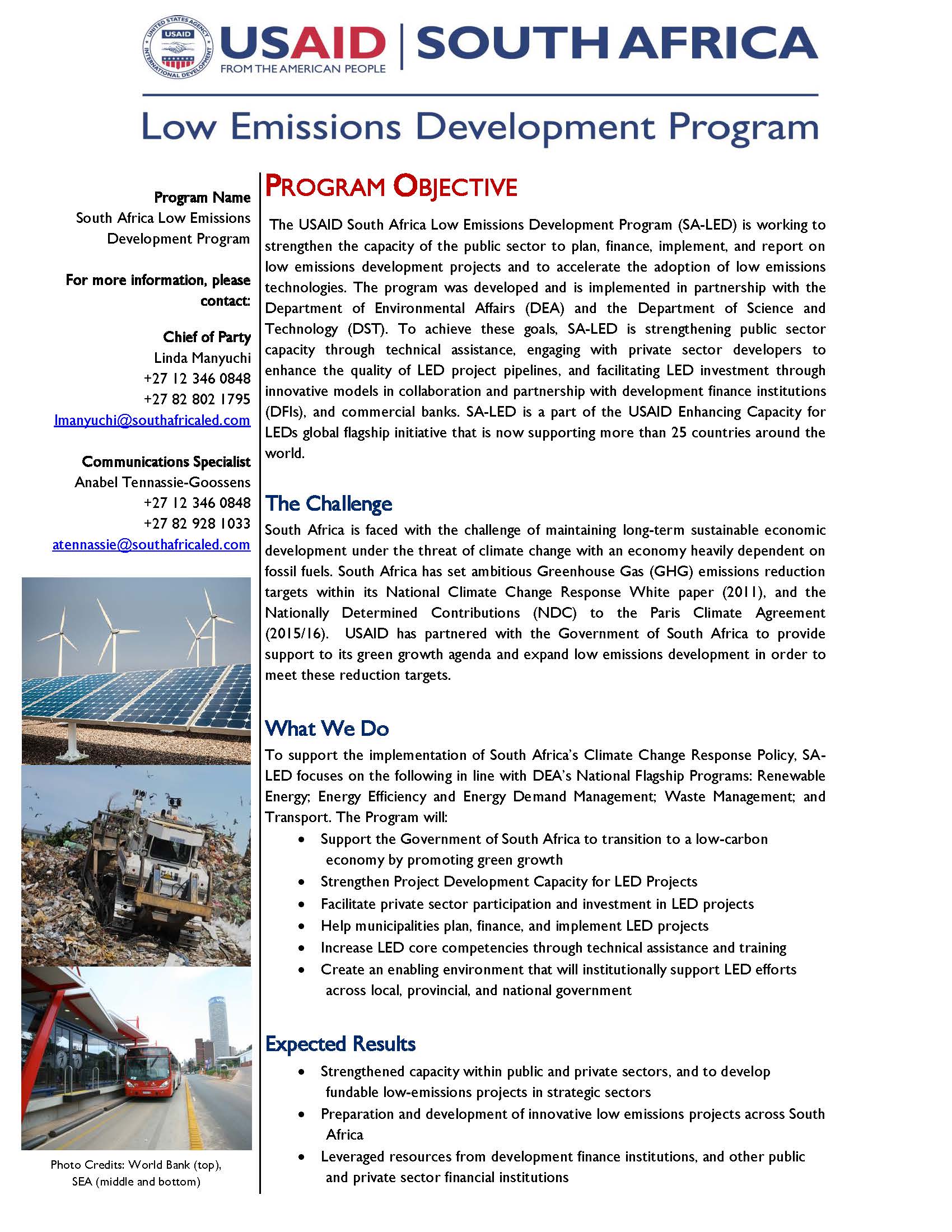PROGRAM OBJECTIVE
The USAID South Africa Low Emissions Development Program (SA-LED) is working to strengthen the capacity of the public sector to plan, finance, implement, and report on low emissions development projects and to accelerate the adoption of low emissions technologies. The program was developed and is implemented in partnership with the Department of Environmental Affairs (DEA) and the Department of Science and Technology (DST). To achieve these goals, SA-LED is strengthening public sector capacity through technical assistance, engaging with private sector developers to enhance the quality of LED project pipelines, and facilitating LED investment through innovative models in collaboration and partnership with development finance institutions (DFIs), and commercial banks. SA-LED is a part of the USAID Enhancing Capacity for LEDs global flagship initiative that is now supporting more than 25 countries around the world.
The Challenge
South Africa is faced with the challenge of maintaining long-term sustainable economic development under the threat of climate change with an economy heavily dependent on fossil fuels. South Africa has set ambitious Greenhouse Gas (GHG) emissions reduction targets within its National Climate Change Response White paper (2011), and the Nationally Determined Contributions (NDC) to the Paris Climate Agreement (2015/16). USAID has partnered with the Government of South Africa to provide support to its green growth agenda and expand low emissions development in order to meet these reduction targets.
What We Do
To support the implementation of South Africa’s Climate Change Response Policy, SA-LED focuses on the following in line with DEA’s National Flagship Programs: Renewable Energy; Energy Efficiency and Energy Demand Management; Waste Management; and Transport. The Program will:
- Support the Government of South Africa to transition to a low-carbon economy by promoting green growth
- Strengthen Project Development Capacity for LED Projects
- Facilitate private sector participation and investment in LED projects
- Help municipalities plan, finance, and implement LED projects
- Increase LED core competencies through technical assistance and training
- Create an enabling environment that will institutionally support LED efforts across local, provincial, and national government
Expected Results
- Strengthened capacity within public and private sectors, and to develop fundable low-emissions projects in strategic sectors
- Preparation and development of innovative low emissions projects across South Africa
- Leveraged resources from development finance institutions, and other public and private sector financial institutions








Comment
Make a general inquiry or suggest an improvement.